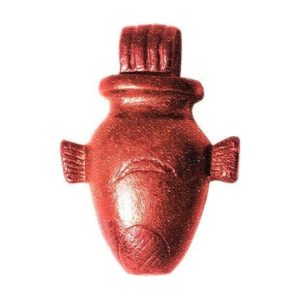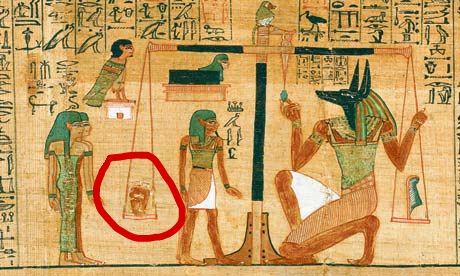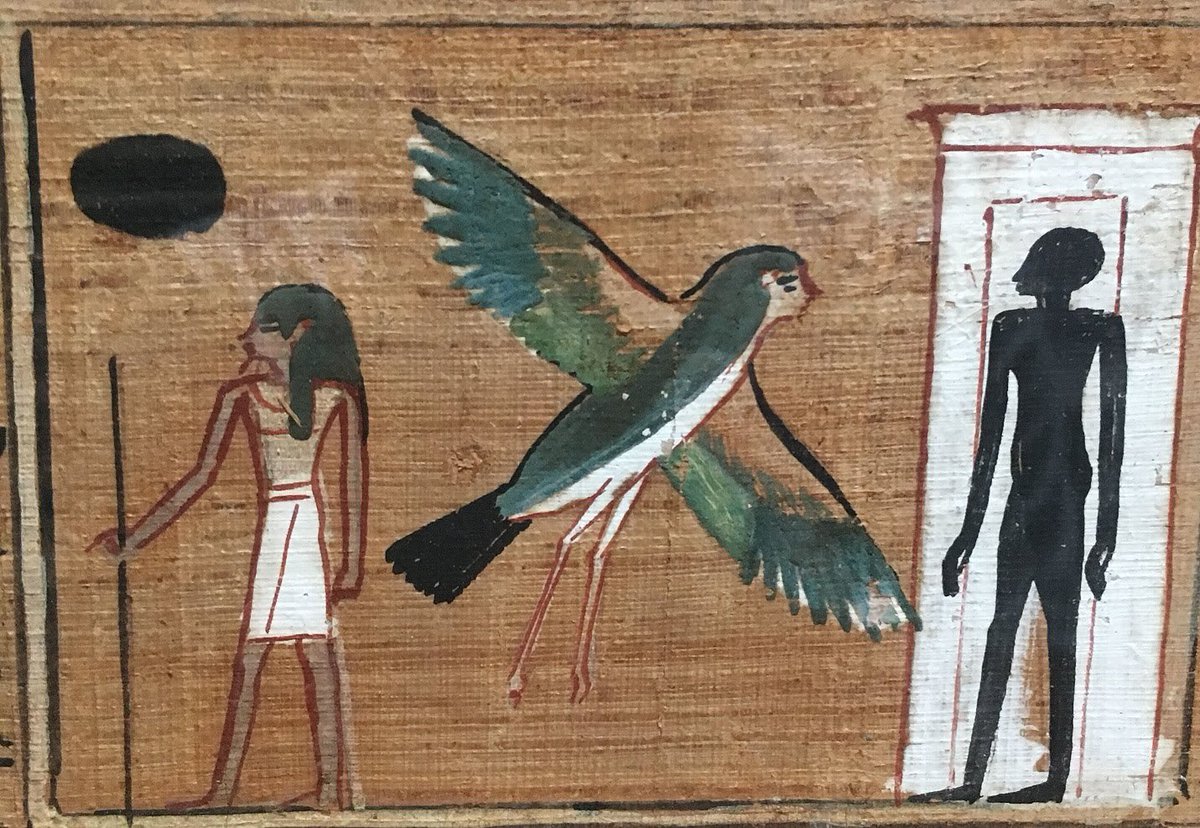The way I read the Heliopolitan cosmogony at least, human beings are not creations or playthings of the Netjeru (Gods); we are their younger and less powerful relatives, a race of living demigods. As discussed in Episode #19, every sentient being can be considered an avatar or incarnation of Atum-Ra, the Creator. This is evident from the fact that people can use heka (magic or spirituality) to work Ma’at (truth, balance, order, and interconnectedness) against isfet (falsehood, toxicity, injustice, and disintegration), just as the Gods do. But while the Gods work Ma’at together up at their higher, more cosmic levels of existence, it is our responsibility to work Ma’at here on earth as their mortal counterparts. In this way, the war between the Netjeru and Apep or other powers of isfet is reflected in even the most mundane human struggles against evil, no matter how small or mundane they might seem.

Given this, it is important to understand what it actually means to be the Great He-She incarnate. It is not a license to just do whatever we want; for even the Gods aren’t perfect, and any mistakes they make could have cataclysmic consequences for everyone (including themselves). The same is equally true of people, who run around wasting natural resources, splitting atoms, and unleashing terrible pollution and plagues upon this world. We have such remarkable power and potential, but we have so little patience for delay of gratification that we have fucked up the planet and each other well beyond measure. If we do not want our world to fall apart, we must each take responsibility like the Gods do by upholding Ma’at and abjuring isfet. This is not just a call to behave ethically, but a real spiritual battle, a lifelong magical quest. Both here and in Duat (the Spirit World), the best way to help ourselves is by helping others, and the best way to destroy ourselves is by destroying others.

The ancient Egyptians believed the human self consists of several multidimensional components. The following is neither an exhaustive list nor a definitive explanation of what these components actually are; it is simply how I conceptualize them personally, at least at present. While I like to think I know my stuff when it comes to Set, I really can’t claim to be an “expert” on Kemetic Soul Anatomy. I therefore reserve the right to adjust my opinions on these topics as I acquire more knowledge over time.
I should also clarify that I am not a Kemetic reconstructionist exactly. My walk with Set is definitely influenced by Kemetic sources, but I have also been deeply influenced by Western occultism, which has been known to take some mighty big liberties with Egyptian thought. (Just look at Thelema.) LV-426 Setians like me are probably every bit as eclectic in our approach to the Other Side as most Western occultists are; but we also pride ourselves on being crystal clear about what is actually “Kemetic” and what is not. That being said, I am not prepared to claim that what I have written about the Egyptian concept of the self below is 100% authentically Kemetic; these are just my own thoughts on the matter (such as they may be), so take from them what you will.
The most obvious component of the self is the physical body, which the Egyptians called the khat. Images are magical windows to alternate universes, and there is no greater image for the self than one’s very own material form. In the West we tend to dissociate ourselves from our bodies all the time, but this ontological dualism does not exist so much in Kemetic belief. To me at least, it is more a matter of the body being a “seed” in which our incorporeal aspects are fundamentally rooted. We aren’t souls born into bodies; we are bodies from whence souls sprout! So essential is the khat to the self’s existence that its preservation was deemed absolutely critical to having a pleasant afterlife; hence the tradition of mummification. For those whose corpses are lost or destroyed, new images can be created to serve as magical surrogates (statues, drawings, etc.).
I think even the Netjeru have khatu or physical bodies; it’s just that their blood and bones are in plants, animals, the elements, and other natural phenomena. When we see their actual flesh, we think we are just observing weather patterns, seasonal changes, or astronomical events; but our ecosystem is just as alive with soul and spirit as we are. It is when we grasp this principle that we can actually peek beyond the Veil and into Duat. There are also tales of the Netjeru having lived right here on earth with literal bodies as we understand them (and with flesh made of gold and bones made of silver, to boot). There is a point in Egyptian mythology where the history of the world transitions from being linear to becoming cyclical. When the Gods still walked this earth, time was linear, with events unfolding between the Netjeru from beginning to middle to end; but when the Gods ascended to the heavens, nature switched to following cyclical time. What were once linear events for the Gods are now cyclical events that we experience here on earth over and over again as the seasons, the human reproductive cycle, etc.

In our Western vernacular, little distinction is ever made between the concepts of “soul” and “spirit.” These terms are used interchangeably in any number of different contexts, but I prefer to differentiate between the two as carefully as I can. The Egyptians distinguished between the ba and the ka, which I use as my benchmarks on this matter. The ba, represented as a human-headed bird, was conceived as the innermost personality of a sentient being, which is how I tend to conceptualize “the soul.” The ka, represented as a doppelganger that follows a person throughout their entire life, is more like a secondary, invisible body that individual can use to interact with things in Duat. This is more or less what I mean when I refer to “the spirit.” So your soul is like the part of you that consistently stays the same, no matter how much you might kheper or transform over time. Your spirit is more like the part of you that can touch or be touched by Gods and other spirits (living or discarnate).

There is also a story about the God Khnum sculpting the bodies and spirits of unborn children on his potter’s wheel, then placing them within the wombs of expectant mothers. This is such a powerful image; it evokes how the ka is like a twin version of yourself that occupies the exact same points in time and space that you do, but in a slightly different dimension you might say. Heka or magic is the art of learning to use your ka or spirit to create change, as opposed to implementing more conventional physical methods. For example, the logic behind a healing spell (as I see it at least) is that you are basically sending regenerative vibes to the recipient’s spirit from your own, which will hopefully heighten the recipient’s chances for a speedy recovery. Even a thoughtful “Get Well” card can be an incredibly magical act in this regard, for it is literally a matter of trying to “lift” the other person’s spirit.
This applies to when we have spiritual experiences with Gods or ancestors, too. Whenever I have a vision of Set, for example, I think of it as a matter of Set’s spirit interacting with mine, not of me actually seeing a literal Sha-headed man with my physical eyes. We physically observe Set with the eyes of our khatu all the time whenever we observe thunderstorms, donkeys, the Big Dipper, or even people with red hair. But when we bear witness to Set in ways that most people would call “supernatural,” we are actually seeing one or more of the kau or spiritual bodies of the God—and we are seeing these kau with the eyes of our own kau as well.
Each of the holy Netjeru has multiple bau or souls as well. The way I read it, this speaks to how there are really multiple universes, infinite timelines brought forth from the Big Bang, that moment when the First Netjer awakened and determined themself. In some realities, that Netjer determined themself as Atum-Ra; in others, they determined themself as Ptah, Amun, Neith, etc. (There might even be a universe where Set is the Creator!) There is probably some other dimension where I’m gay and married to one of my best male friends. Or maybe I’m a woman who lives alone in the woods somewhere with a passel of cats. Maybe I’m a hip crime fighter in one world, and a devious supervillain in another. Whomever and whatever I might be in whichever reality we care to consider, I think of these alternate personalities as my various bau or souls; they may be different versions of me, but they are all still me. (Just like Doctor Who is still the Doctor, whether they are being played by Jon Pertwee or Jodie Whittaker.)

Another core component of the self in Kemetic thought is the ib or “heart,” by which the Egyptians meant the literal bodily organ (as opposed to a purely figurative concept of “heart,” like in Captain Planet or something). Advanced as they were, the ancient Egyptians didn’t realize the brain is the body part that enables us to think; they identified the heart as serving this function instead. It was considered to be the seat of a person’s consciousness, as well as the part of their body where their khat and their ka are connected.

When a person’s ib or heart stopped, the khat, ba, and ka were all separated. The spirit would remain with the corpse while the soul was guided by Anubis or another psychopomp to the Hall of Judgment in Duat. There the soul underwent the Weighing of the Heart, which meant the person was judged for all of their deeds and misdeeds in life—a thing for which only sentient beings with hearts (or in our culture, brains) can be held responsible for. If the person’s heart was too heavy with isfet, they were deemed unfit for the afterlife and fed to the daemon Ammut or cast into a lake of fire. Back on earth, the spirit withered away and died; or it could become restless and terrorize the living as an evil ghost. But if a person’s heart was more or less in good standing with Ma’at, their ba and their ka were reunited by the Gods, transforming the deceased into an Akh or Imperishable One.

An Akh is also united with what the Egyptians called the shut or khaibit (the “shadow”). The “shadow” in this context is literal, referring to those black shapes our bodies cast on walls or the ground whenever we stand in the light. Our shadows are not just apparitions, but living parts of ourselves; we create them without even thinking about it, and a part of us exists in them and is reflected in them. In the exact same way, a person can exist in other things they intentionally create as well, like songs, paintings, photographs, works of literature, etc. This is exactly why the Egyptians built so many monuments and wrote down so much of their knowledge and history. To preserve their culture in so meticulous a manner has not only been a benefit for modern archaeologists in piecing together the Kemetic worldview; it has also helped the ancient Egyptians live on and continue influencing people today. This applies to when we look at photos or read letters from our departed loved ones, as well; art and literature do in fact help us live on after death, and I think it is our shutu or shadows that probably benefit from such creative work specifically.
Names, or renu in ancient Egyptian, are also significant dimensions of the self. This includes not only our birth names, but any titles, nicknames, and other names we might be given or choose for ourselves as well. Each of the Gods has various names by which they are known, and the same is true of us. Names are living extensions of ourselves that carry a real, lasting power of their own; for though they are long dead, we still speak the names of Hatshepsut, Joan of Arc, Princess Diana, and other blessed ancestors in regular conversation today. Doing so helps to keep this aspect of the self alive after death. There is also a story in which the Goddess Isis tricks Atum-Ra into giving her their true secret name, which only Ra had known up to that point. By learning the true unknown name of Ra, Isis becomes the most powerful Goddess, magician, and woman of all time.

Conversely, the Egyptians defaced or erased the names of people and things they wanted to write out of history and existence. This is what happened to the Heretic King, Akhenaten (born Amenhotep IV), who prioritized the new religion of Atenism over his duty to be a good and responsible leader. His name was removed from various monuments after his death in an attempt to forget that this particular ruler even existed. This is also why modern Kemetics generally write the name of Apep in strikeout text. Simply writing the name is not good enough, because it can actually attract the monster’s attention to ourselves. Writing its name in strikeout text serves as a way for us to communicate about the rotten bastard without actually evoking it into our lives.
It is not exactly clear what happens when a deceased person passes the Weighing of the Heart and is transformed into an Akh. But I imagine that person would be united with themself across both this world (as a corpse and a spirit) and the Other Side (as a soul), as well as with their various names and any objects in which their shadows might reside (photos, diaries, etc.). I also imagine they would be united with all the possible variations of their soul that might exist across the vast multiplicity of universes. Akhu are said to reside with the Netjeru in Duat, but there are actually many different heavens included there. I think Akhu are free to visit either of these various realms, but they are also free to visit the living and travel to alternate realities as well. This mobility of the Akhu between universes is remarkable when compared to other religious teachings about the soul after death. I can’t even begin to grasp what such an existence might be like; but I think it probably isn’t that far removed from how the people of the “Q Continuum” exist in Star Trek: The Next Generation (1987–1994).

The Egyptians also referred to additional facets of the self, but our knowledge of what these things actually are is unclear. There is something called sekhem, which translates to mean “power” or “form.” This could be referring to the latent magical power that exists within each of us as unique incarnations of Ra; but I am really just guessing. It is tempting to compare sekhem with what Chinese folk medicine calls qi or “chi”: a vital life force or energy flow that can be used to guide exercises and reinforce medical treatments. It might also be similar to Japanese Reiki, a form of alternative medicine that involves energy healing.
There is also something called a sahu, which seems to be an additional spiritual body that is generated for the deceased during their funerary rites. It is not evident how this feature should be distinguished from the ka or spirit exactly, except perhaps that the ka exists from birth while the sahu doesn’t. I have heard it said that the state of sahu is probably closest to how the Netjeru experience their own existence; but the concept remains unclassifiable nevertheless. Rather than try to pontificate on things for which there is currently so little available evidence, I simply accept that there are no clear answers to this particular question at present.
For now at least, it is enough for me to know I am a body with a soul, a spirit, a heart, a shadow, and a name. There are many different versions of me that exist in all kinds of different universes, too. When I die, I hope to be found worthy of the afterlife during the Weighing of my Heart. I hope for all the pieces of my self to be re-united so I can become an Akh and get up to some shenanigans with other Akhu out in Set’s Desert, beyond the Great Bear. And I hope that when I get there, I’ll meet Ronnie James Dio and we can go smite some monsters of isfet together!
